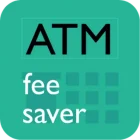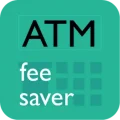Wondering how to pay for metro and bus rides in Denmark - cash only, or do cards work too?
Copenhagen’s transport system is super modern. From the airport to the city on the metro, I used my Apple Pay - one tap, done. No tickets, no coins. The buses through Østerbro also worked the same way. I stayed at an Airbnb near Christianshavn and could hop on and off easily without worrying about change. Honestly, I think Denmark is one of the most seamless countries for public transport payments. Cards rule here, and cash isn’t needed at all.
While Denmark is very card-based, the only frustration I had was with the DOT app, which sometimes wouldn’t accept my foreign Visa. At the physical metro gates though, my card always worked. I stayed in Frederiksberg and used buses and metro daily without touching cash once. But if your card isn’t contactless or has foreign restrictions, you might run into problems. In that case, you’ll need to buy a paper ticket at the DSB machine. For most travellers though, cards are king in Denmark’s transport system.
I was in Copenhagen for a week, staying near Vesterbro. Every single metro ride I took, from Enghave Plads to Kongens Nytorv, I just tapped my Mastercard. Same with the yellow city buses - the driver never handled cash, it was all contactless. I didn’t use coins once. Even when I went out to Roskilde on the S-train, my card worked. Compared to southern Europe, it felt effortless. Denmark is built for cards when it comes to transport.
Denmark is very card-friendly. In Copenhagen, you can tap your contactless Visa or Mastercard directly on metro gates and buses. I stayed near Nørreport and used my Revolut card daily for the metro to the airport, no problem. Paper tickets exist but barely anyone uses cash anymore. Even at small bus stops in Amager, my card worked instantly. If you’re from abroad, make sure your card doesn’t charge foreign fees, but otherwise it’s one of the easiest systems I’ve ever used.


